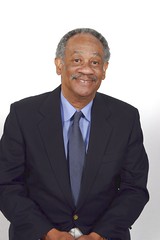Styles of Communication in Anger Management
It is important for all of us to remember that there are four styles of communication that each person has at his/her disposal. However, the key to having one’s needs met in a respectful manner depends entirely on which style he/she uses when communicating with others. Let’s take a moment to look at the four styles:
•Passive Communication = The passive communicator avoids direct eye contact, fails to accurately express his or her feelings, and tends to have low self-esteem. The anger is self-directed rather than directed at the source of the anger.
•Passive-Aggressive Communication = The passive-aggressive communicator often sounds passive, but is hostile in his/her manner of speaking. He/she uses sarcasm and other hostile gestures to get a point across. The listener is left without any indication of what the passive-aggressive communicator needs or wants.
•Aggressive Communication = The aggressive communicator invades the space of the listener, speaks in a threatening manner, and may throw objects, glare, or attempt to intimidate the listener. He or she attempts to blame the listener for whatever the source of the disagreement may be.
•Assertive Communication = The assertive communicator speaks in a reasonable tone, establishes eye contact with the listener, uses “I” messages, and clearly states his or her needs, feelings, and requests. He/she invites the listener to work towards a mutually satisfactory resolution of the conflict. This person consciously influences the listener by his/her own behavior, and demonstrates skills in emotional intelligence.
From these descriptions, you can see which kind of style is crucial for maintaining positive relationships with others. It is important for us to be assertive, especially in circumstances where the listener has done something to incite the anger. The key to getting one’s needs met with resolution is to be the bigger person. Being the bigger person means being Assertive…not aggressive, not passive-aggressive, and definitely not passive.
George Anderson, MSW, BCD, CAMF, CEAP
Diplomate, American Association of Anger Management Providers
Anderson & Anderson®, The Trusted Name in Anger Management
http://www.andersonservices.com/
http://www.aaamp.org
http://www.linkedin.com/in/geoanderson
www.anger-management-resources.org


0 Comments:
Post a Comment
<< Home